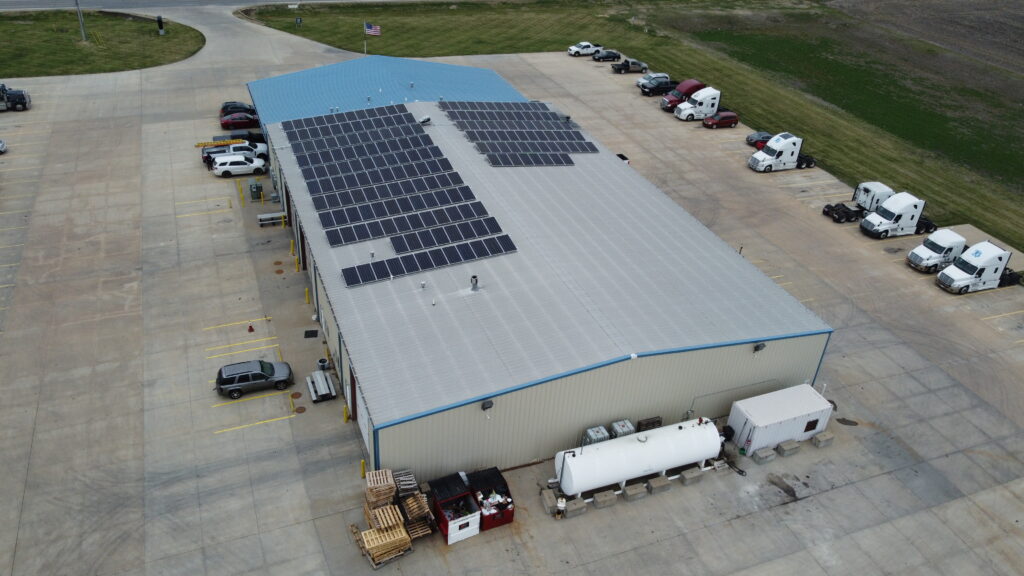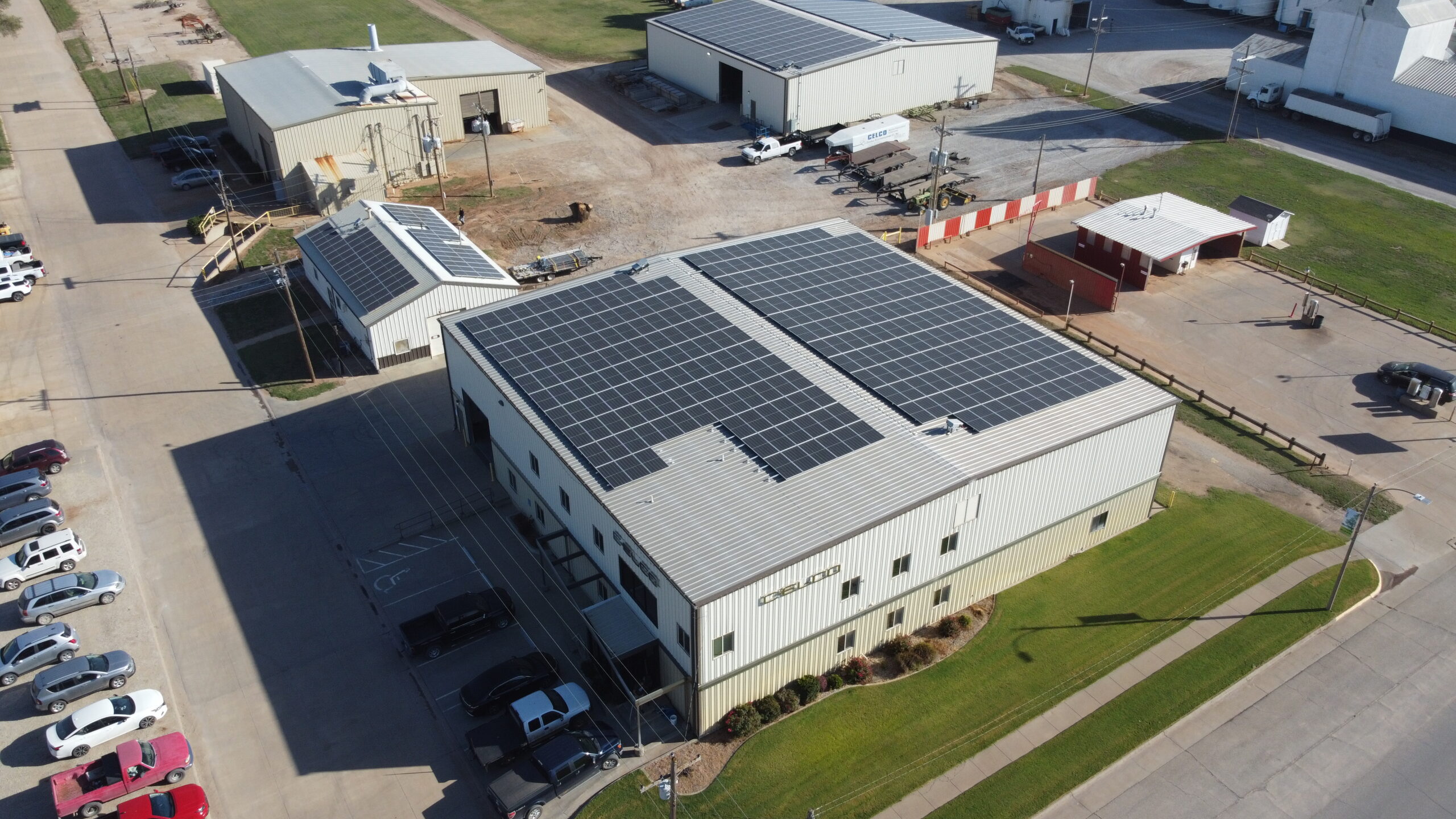The commercial solar market looks different in 2025 than it did a few years ago. Trade policy, economic conditions, and supply chain shifts are influencing project costs and timelines. But the bottom line hasn’t changed: Solar is still one of the smartest investments a business can make to control energy expenses.
If you’re running a manufacturing plant, overseeing a facility, or managing capital improvements, this is the time to sharpen your strategy—not pull back from it. Tariffs are now part of the landscape. The right approach is to understand how they work and plan accordingly.
Understanding Solar Tariffs in 2025
In 2025, there are a few different tariffs—or import taxes—that apply to solar panels and parts coming into the U.S. These tariffs are designed to encourage more manufacturing here at home, but they also affect how much a solar project can cost.
Here’s a straightforward breakdown of the three main ones you should know:
- Section 201 Safeguard Tariffs: These apply to most solar panels imported into the U.S. They were put in place to protect American manufacturers. Think of this as a blanket tax on common solar panels that aren’t made here.
- Section 301 Tariffs: These target products from China in response to unfair trade practices. They affect some solar parts and materials, especially if they come from Chinese-owned factories—even if those factories are located outside of China.
- Anti-Dumping and Countervailing Duties (AD/CVD): These are extra charges placed on panels and parts from countries like China, Vietnam, Malaysia, and Thailand when the U.S. government finds that they’re being sold too cheaply or with unfair support from foreign governments.
What this means for you: While tariffs may lead to higher panel prices overall, partnering with an experienced solar developer makes a difference.
Here at Artisun Solar, our strong vendor relationships, buying power, and careful inventory management helps us keep costs low, even when others face tariff-driven price increases.
How Tariffs Affect Project Economics—and Create Opportunity
The Inflation Reduction Act created financial tools to help offset these tariff-related increases. If your commercial solar installation company uses domestically produced panels and steel, your project could qualify for a 10% Domestic Content Bonus on top of the standard 30% Investment Tax Credit (ITC).
That means up to 40% of your system’s cost can be recaptured through federal incentives—before you even start saving on your utility bill.
Projects that qualify for domestic content are also seeing better shipping timelines and fewer sourcing delays. Domestic supply chains have matured, and that’s giving commercial buyers more predictability when budgeting and planning.
Bottom line: Yes, tariffs increase costs. But smart sourcing and finding the right solar partner who has experience navigating these waters can turn those same tariffs into a competitive advantage.
Commercial Solar Is Growing, Not Slowing
Despite these policy changes, the commercial solar market is strong. Businesses are still moving forward with projects because energy savings and ROI remain solid.
Rising utility rates are squeezing margins across industries—from ag operations to warehouse facilities. Solar helps stabilize those costs.
When paired with accelerated depreciation (MACRS), available tax credits, and optional storage solutions, commercial solar delivers measurable value. Artisun Solar walks you through the solar incentives that may be available to you so you don’t have to do the guesswork yourself.
What we’re seeing is a shift in how projects are scoped. More companies are locking in domestic equipment early, leveraging all available incentives, and building systems that pay for themselves faster.
2025 Solar Economic Trends to Know
In addition to tariffs, a few macroeconomic trends are shaping how commercial solar gets financed and deployed:
- Interest rates have stabilized after two years of volatility, which is bringing more financing back into the market.
- Supply chains have improved, with better availability of all components of a solar project, including racking, modules, and inverters.
- Labor shortages still exist in some regions, which makes early planning critical.
- Energy volatility continues to drive demand. Peak charges and unpredictable utility bills are a major concern, especially for high-load facilities.
Many businesses are exploring solar-plus-storage and alternative financing options, such as Power Purchase Agreements (PPAs), to lower risk, improve cash flow, and maximize savings from day one.
How to Plan Your Smart Commercial Solar Build in 2025
If you’re evaluating solar for your facility, here’s what to focus on:
- Begin by partnering with an experienced commercial solar developer who understands tariffs, incentives, and supply chain logistics. This solar partner will keep your project on time and on budget.
- Get a clear picture of the numbers, including available incentives. To speed up the process, have a year’s worth of energy bills ready to share.
When reviewing proposals, be sure to ask about and understand:- Incentives, such as domestic content requirements, energy community bonuses, and tax credits—all of which influence your return on investment.
- Deadlines and application requirements for incentives, clarifying what your solar partner will handle and what will be your responsibility. At Artisun Solar, we provide white glove service, meaning we handle all of the heavy lifting for you.
- Project financials, including estimated savings, solar generation versus energy consumption, cash flow, ROI, payback period, and total costs.
- Ask about how the developer manages inventory related to tariffs and supply chain fluctuations. This understanding helps coordinate early equipment sourcing, ensuring you receive the best value and timeline for your project.
Solar Still Makes Sense—You Just Have to Plan for It
Tariffs are a factor in 2025, but they don’t change the simple reality: solar is still one of the best ways to lower your energy costs and bring predictability to your bottom line.
At Artisun Solar, we’re not in the business of selling ideas—we build systems that produce results. We’ve been helping businesses navigate supply shifts, policy changes, and economic swings for over a decade. None of that is new. What matters is how you plan.
If your facility is getting hit with rising energy bills, let’s run the numbers. We’ll show you what the actual return looks like with today’s costs and incentives, and if it doesn’t make financial sense, we’ll tell you that too.
Request Your Solar Assessment and get a clear picture of what solar could do for your business in 2025.
Learn more by checking out our Guide To Solar Savings: Understanding the ROI and Benefits of Commercial Solar Energy





